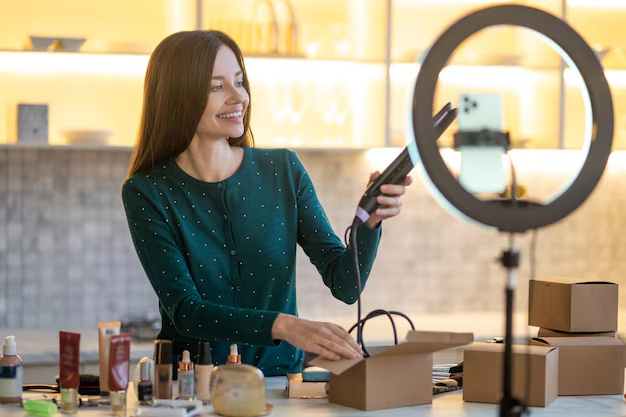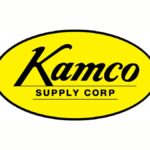The Rise of Influencer Marketing in Beauty
In today’s digital age, the role of influencer marketing in the beauty industry has grown exponentially. Once a domain dominated by glossy magazine ads and celebrity endorsements, the beauty marketing landscape has shifted towards authentic engagement through influencers. For beauty brands, this pivot signifies embracing a dynamic and ever-evolving strategy that speaks directly to their audience. Recent statistics suggest that influencer marketing is poised to generate over $15 billion by 2022 in various industries, with beauty being a substantial contributor. This rapidly growing phenomenon is reshaping how beauty products are introduced, perceived, and bought by consumers.
Leveraging expertise from a beauty influencer marketing agency allows brands to seamlessly navigate this newfound influencer landscape. These agencies act as a bridge, connecting beauty brands to influencers whose image and reputation reflect the brand’s vision, thus ensuring that the campaigns not only reach the intended audience but do so in a manner that is both compelling and credible.
Identifying the Right Influencers for Your Brand
Selecting the ideal influencer might often feel like searching for a needle in a haystack. It requires a meticulous examination of potential candidates to ensure that their personal brand aligns well with the brand’s ethos and audience. This involves delving into various aspects like the influencer’s followers’ demographics, their engagement rates, and their content style. The ability of an influencer to genuinely resonate with their audience can significantly amplify a brand’s message, making the partnership both effective and strategic.
Successful partnerships in the beauty industry serve as prime examples. These are marked by situations where brands have joined forces with influencers who already have a deep, trust-based connection with their followers. Such collaborations often result in a seamless storytelling experience that emphasizes product benefits in a way that feels real and relatable to the audience.
Creating Authentic and Engaging Content
In an era where audiences are becoming more skeptical of overt promotions, the authenticity of content has become crucial. For beauty brands, collaborating with influencers to create content that is genuine is imperative. This means working closely with influencers to develop narratives that are true to both the brand and the influencer’s personal style. The American Marketing Association highlights that co-creating content not only improves authenticity but also ensures that it aligns seamlessly with the brand’s identity and the expectations of its audience.
By engaging influencers in the content creation process, beauty brands can create deeper connections with consumers, making the content more appealing. It’s this authenticity that resonates, encouraging audience trust and, ultimately, impacting buying decisions.
Measuring the Success of Influencer Campaigns
Measuring the success of influencer campaigns involves a data-driven approach. It’s about moving beyond vanity metrics like likes and shares to more substantial figures such as conversions and brand sentiment. Key performance indicators (KPIs) such as reach, engagement rate, and conversion are essential metrics that provide critical insights into a campaign’s effectiveness. With advanced analytics tools, brands can track these metrics to assess the performance of their influencer investments.
For those beginning to tap into influencer marketing analytics. Guides from platforms like Social Media Today offer valuable insights into exploring the complexities of performance tracking. Understanding these metrics ensures that brands can refine their strategies and optimize future campaigns for better results and ROI.
Navigating Challenges in Influencer Marketing
Despite its potential, influencer marketing is not without its challenges. Common issues include influencer fraud, where engagement metrics are artificially inflated, and market saturation, which can lessen the impact of new campaigns. To mitigate these risks, beauty brands need to implement thorough vetting processes for influencers and craft clear, legally binding contracts outlining deliverables and expectations.
Brands can take inspiration from successful navigation examples within the industry. These often involve brands that have turned challenges into learning opportunities. Crafting even stronger strategies that prioritize genuine engagement and meticulous planning.
Future Trends in Beauty Influencer Marketing
As we look to the future, several exciting trends are emerging in beauty influencer marketing. Micro-influencers, known for their highly engaged and niche audiences. Are becoming a valuable asset for brands looking for specific audience connections. Additionally, platforms like TikTok and Instagram continue to innovate, providing new avenues for content creation and engagement.
To stay ahead, beauty brands must adapt proactively to these evolving trends. This involves embracing new technologies, experimenting with different content formats. And staying in tune with the changing behavioral patterns of their target audience. By doing so, brands not only maintain their current relevancy but also position themselves as innovators in an ever-competitive market.
Conclusion
In summary, influencer marketing is becoming a vital tool for beauty firms trying to engage and establish a genuine connection with their audience. By partnering with influencers who resonate deeply with their followers, brands can craft compelling narratives that feel personal and genuine. Driving trust and influencing consumer behavior. The secret to success lies in selecting the right influencers—those whose image and values align with the brand—and co-creating content that reflects both the brand’s identity and the influencer’s unique voice. With the right approach, beauty brands can enhance their visibility and establish lasting relationships with their customers, fostering loyalty and driving sales.
However, successful influencer marketing in the beauty industry requires more than just creativity. It demands data-driven strategies and careful management to overcome potential challenges like influencer fraud and market saturation. By leveraging advanced analytics to track key performance metrics and continually refining their approach. Brands can optimize their campaigns for better results and ROI. Looking forward, staying ahead of emerging trends, such as the rise of micro-influencers and new platform innovations. Will be crucial for beauty brands to maintain relevance and remain competitive. By embracing these evolving opportunities, beauty brands can guarantee their continued success in an increasingly dynamic and competitive market.







